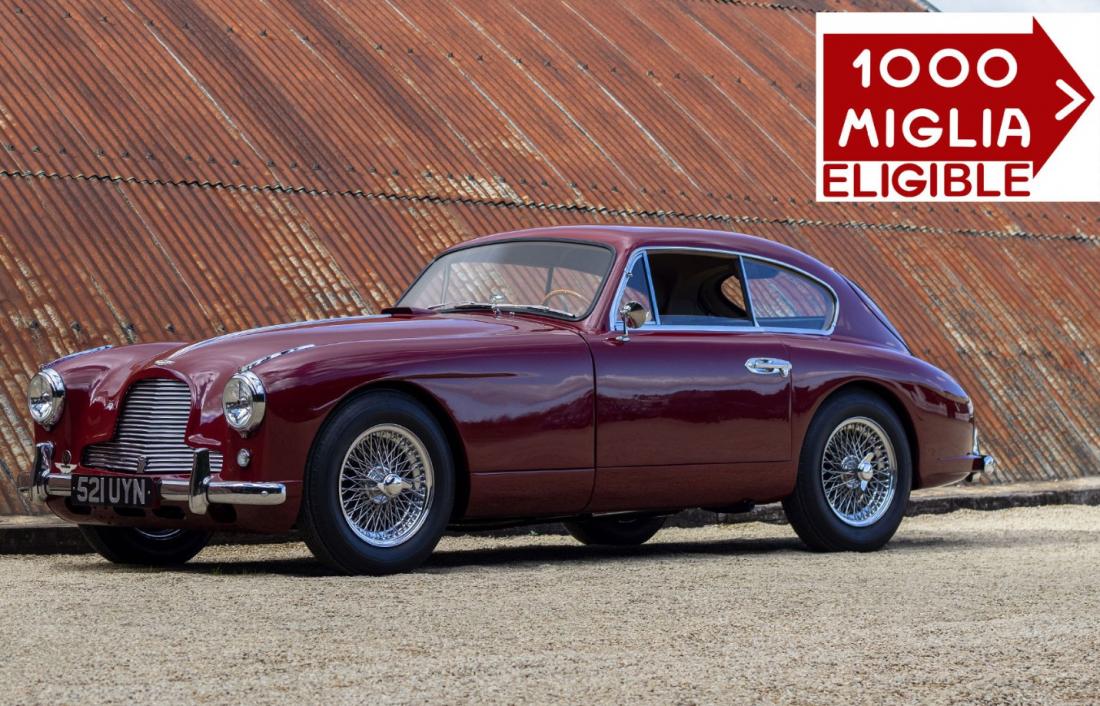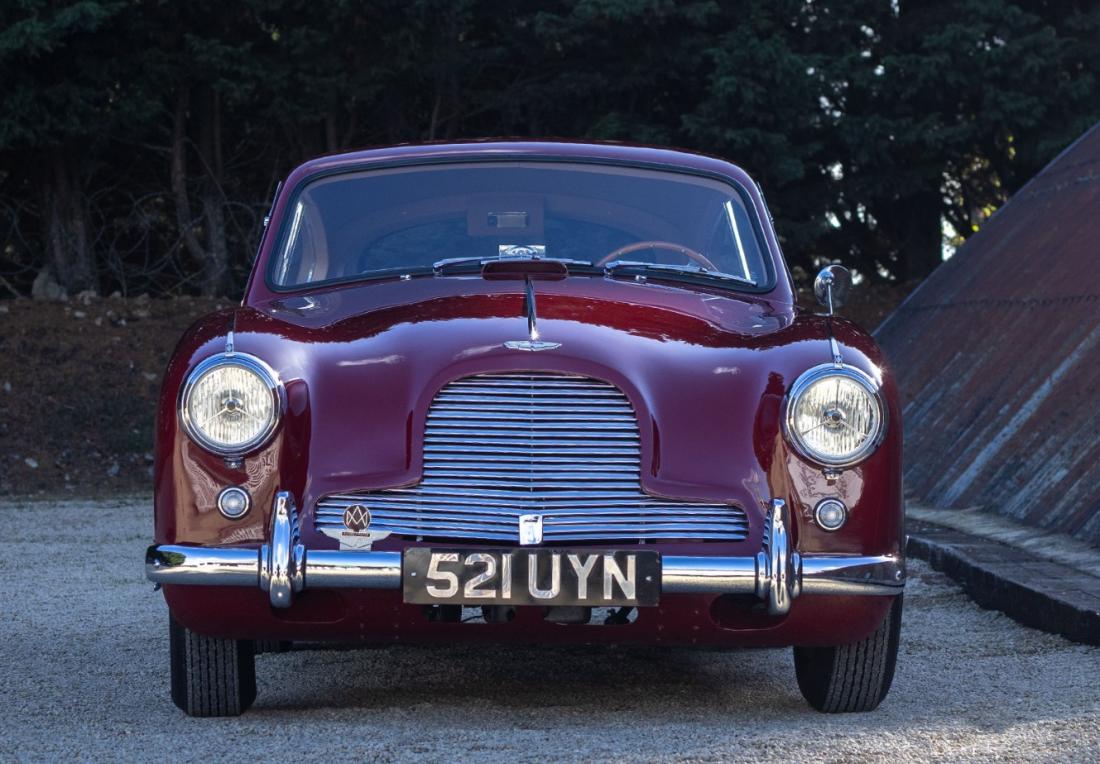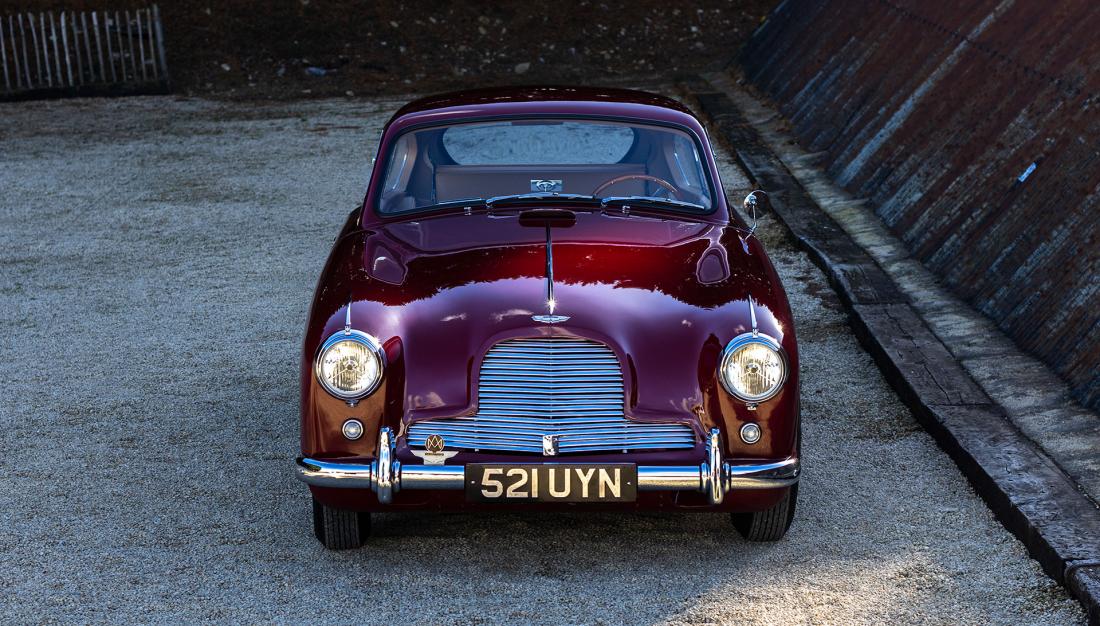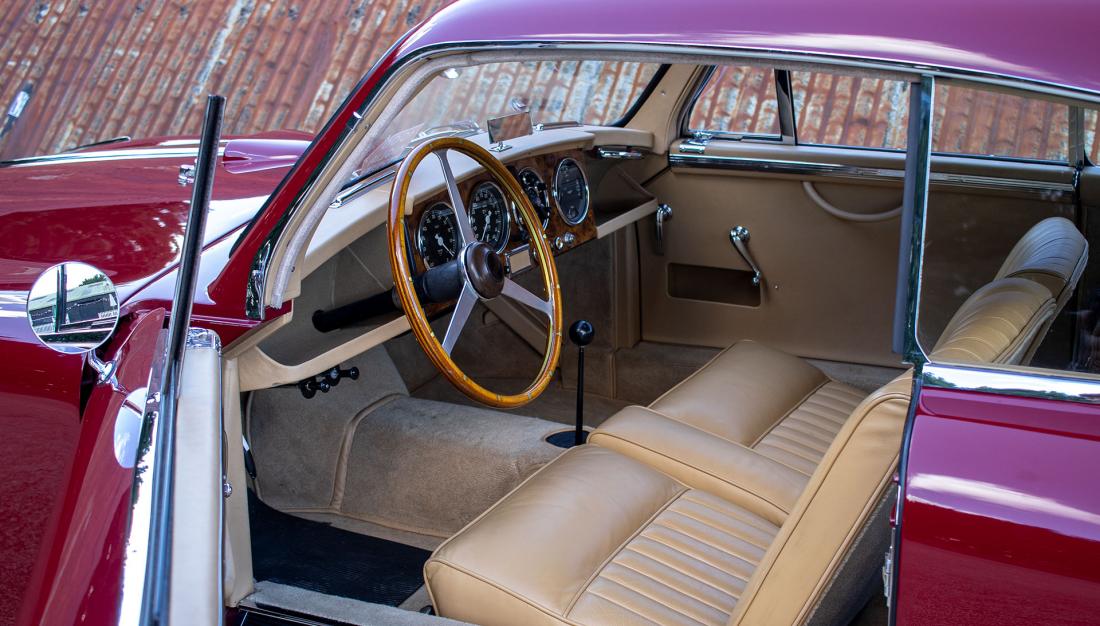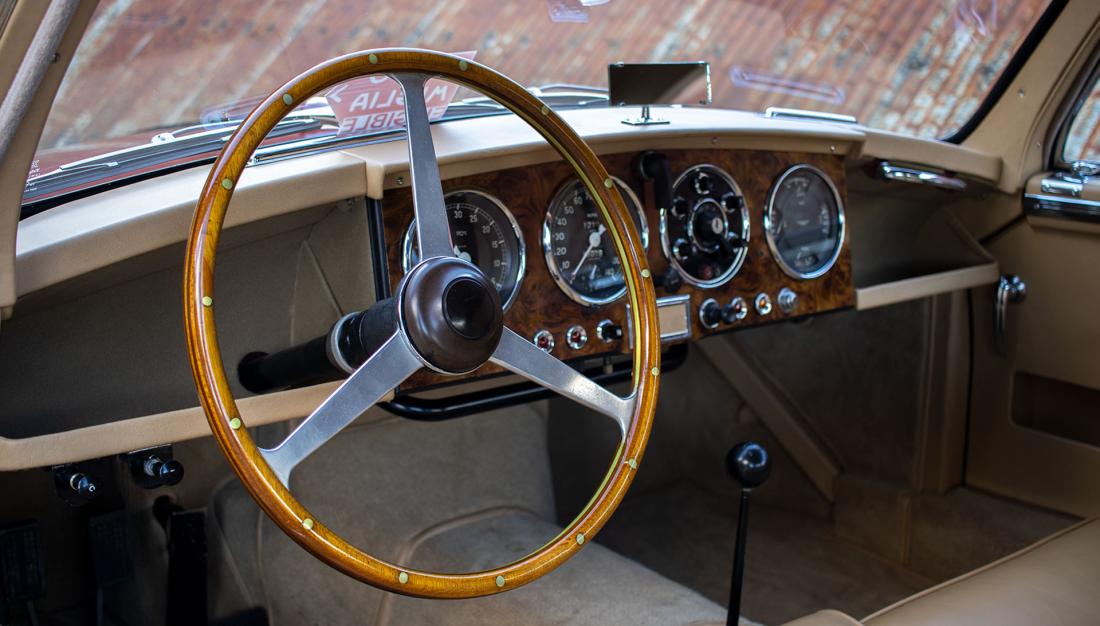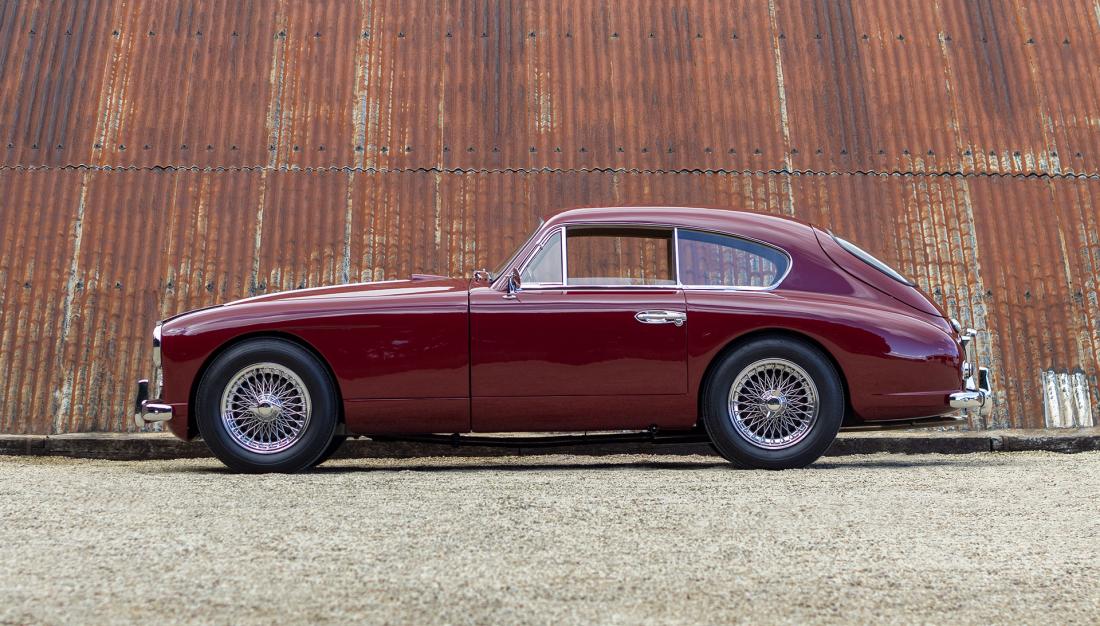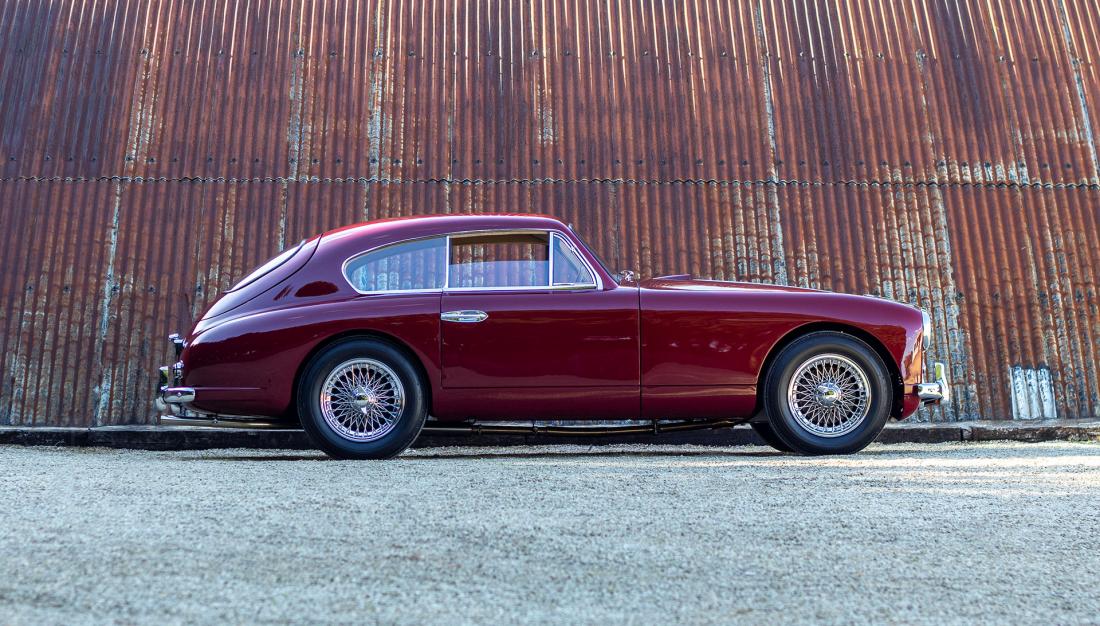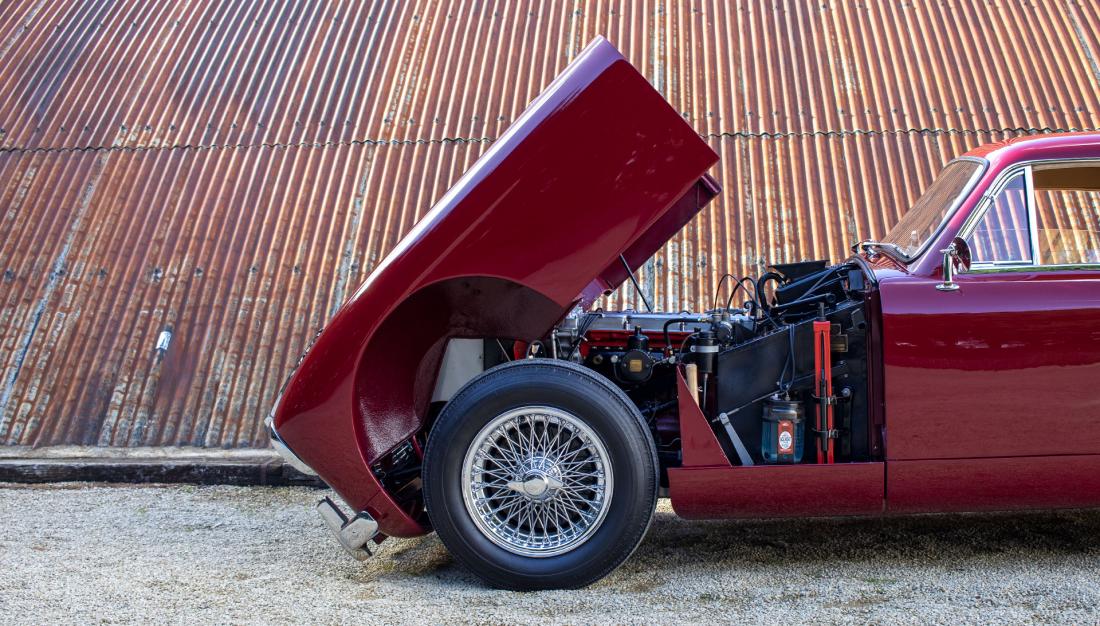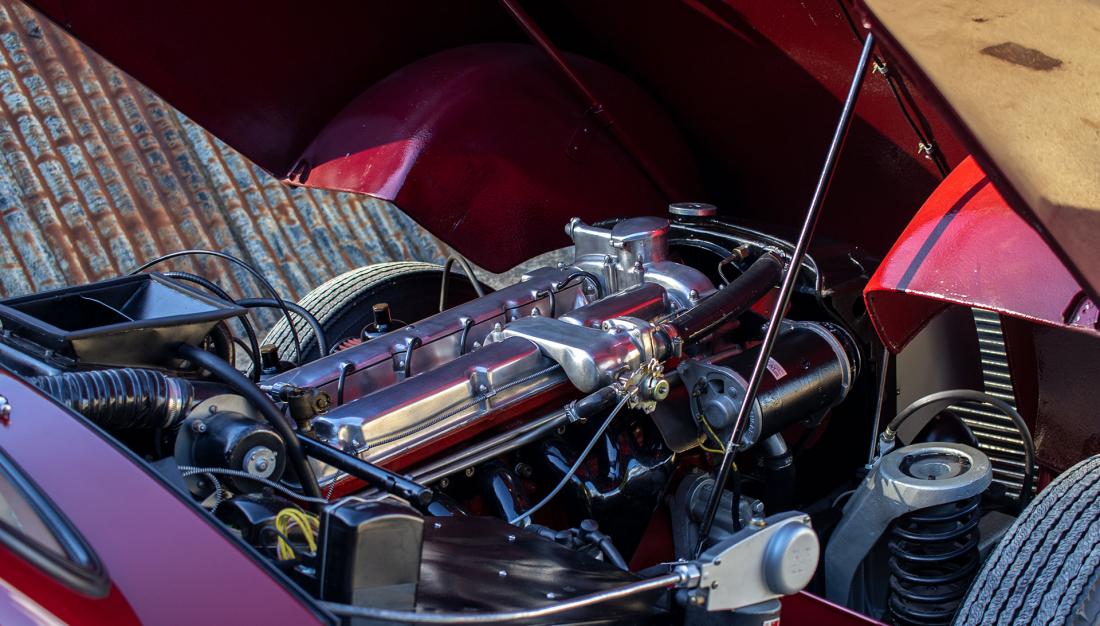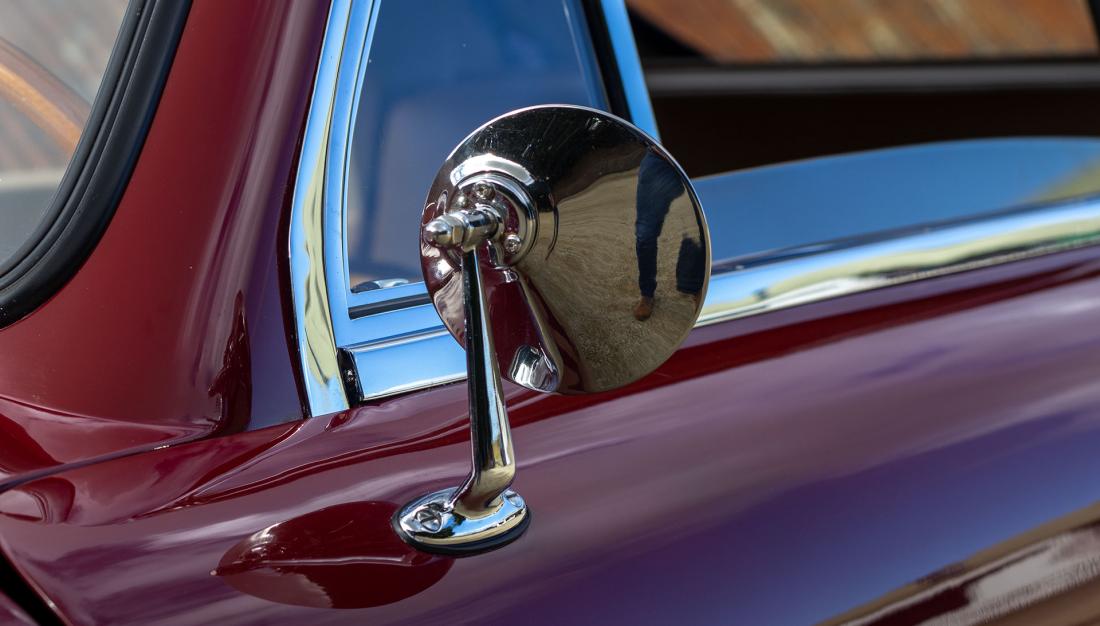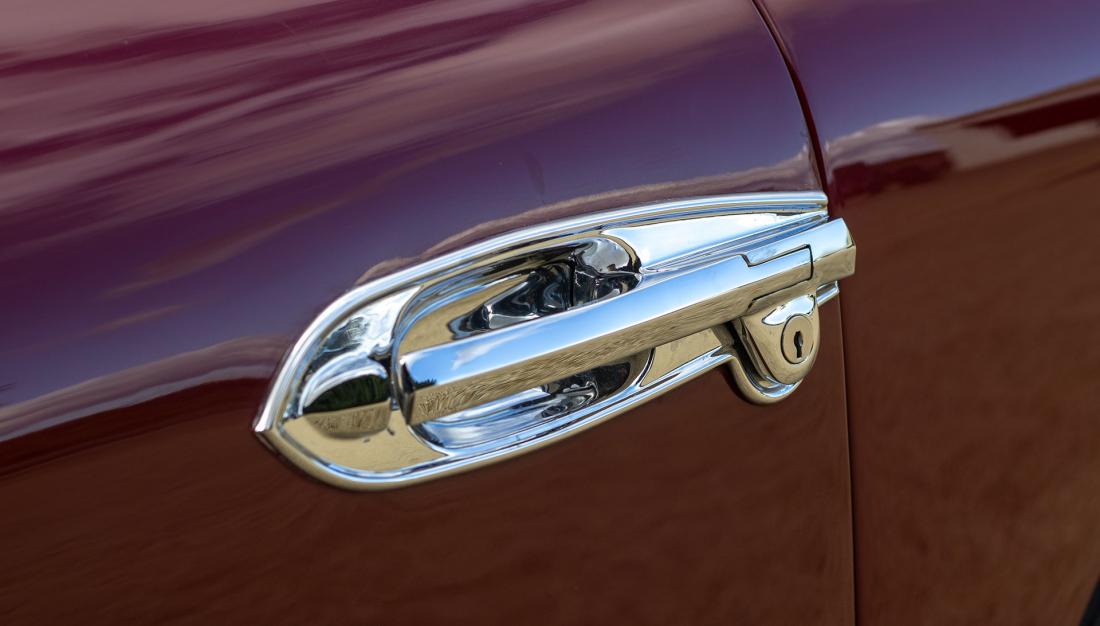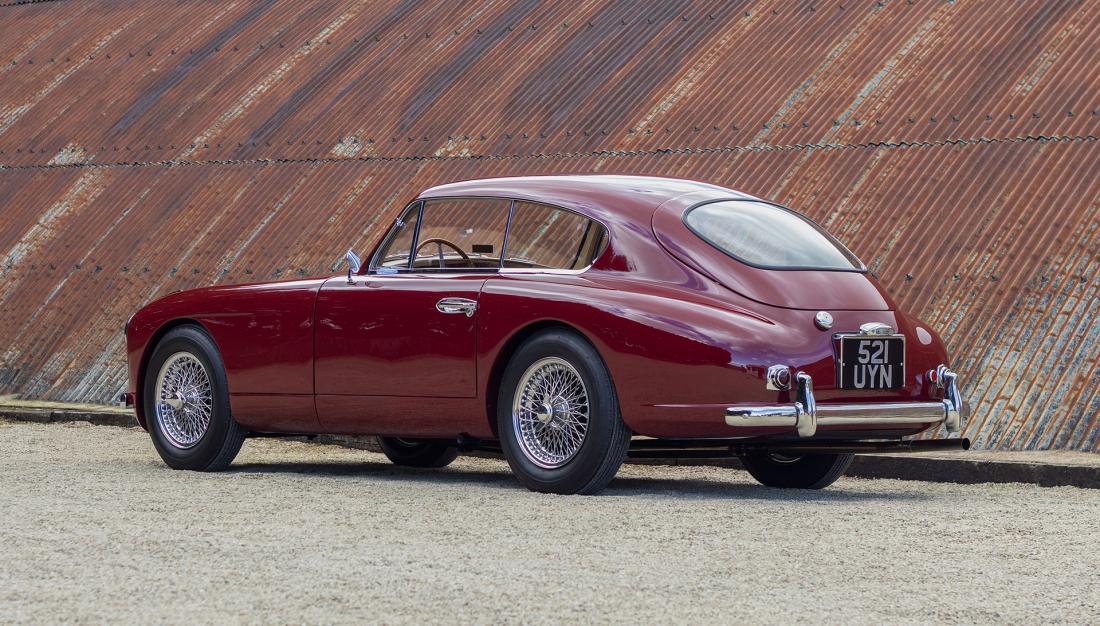1955 Aston-Martin DB2-4
£ 225000

|
Carrosserie
|
Coupe
|

|
Transmissie
|
Manual
|

|
Kleur
|
Burgundy
|

|
Bekleding
|
Leather
|

|
Stuur
|
Lhd
|

|
Chassis nr.
|
LML/1027
|
1955 Aston Martin DB2/4
Recently restored in UK by marque specialists
Original colour scheme of Imperial Crimson with Beige trim
Original build sheet and BMI Heritage Trust Certificate
Eligible for the Mille Miglia
This immaculately presented Aston Martin DB2/4 has recently been the subject of an extensive restoration, with the result that it is now an exceptional example of the Feltham marque’s handsome Grand Tourer.
Chassis number LML/1027 was a left-hand-drive North American export that was built on 5 July 1955. It was dispatched on 28 July that year to the Peter Satori Company in Pasadena, California, and the build sheet notes that it had been fitted with the optional Dunlop Roadspeed whitewall tyres.
The DB2/4 was finished in Imperial Crimson and featured a Beige interior – the colour scheme that it once again wears today. It was sold new to Graham Sterling, who was based in Los Angeles and went on to be President of the State Bar of California in 1958-’59. It’s thought that he kept the Aston Martin until 1968, when it passed to EG Wadkins and Lynette A Booth of Apple Valley, California.
By 2005, the DB2/4 had been acquired by a marque enthusiast and collector, who had it dismantled in preparation for a complete restoration. Before that process could be finished, he was forced to sell his collection, and while the chassis and body had been partially restored, the car was still in need of completion. It was sold at auction by RM and imported back into the UK, after which the rebuild was completed to the exceptional standard in which the Aston Martin appears today.
The bodywork was restored and refinished by David Brown Restorations Ltd in Mansfield, the interior trim was handled by Dave Beswick, and the 2.6-litre straight-six engine and gearbox were rebuilt by Feltham-era Aston Martin specialist Davron.
Now proudly being offered for sale with The Classic Motor Hub, this Aston Martin DB2/4 comes with its original build sheet – supplied by Aston Martin Dorset – and instruction book, plus a certificate from the British Motor Industry Heritage Trust.
MODEL HISTORY
When David Brown acquired Aston Martin in February 1947 for £20,500, it marked the beginning of what would be a golden era for the long-established but occasionally troubled marque. Key to its revival was Brown’s acquisition of Lagonda later that year, which gave him access not only to Lagonda’s WO Bentley-designed 2.6-litre six-cylinder engine, but also its talented stylist, Frank Feeley.
Following a short run of 2-litre Sports models – retrospectively christened the DB1 – the DB2 was introduced in 1950. The Lagonda engine was used and gave 100bhp at 5000rpm, while Feeley’s elegant bodywork was shaped from aluminium at the Feltham factory. At £2331, it was considerably more expensive than the Jaguar XK 120, but the Aston was built in far smaller numbers.
A Vantage model was added in late 1950, with the compression ratio being upped from 6.3:1 to 8.2:1, and a drophead coupé was also offered. Then came the new DB2/4, the bodywork for which was no longer produced in-house. Instead, Mulliners was contracted to make it, although final assembly was still carried out at Feltham.
The DB2/4 – launched at the 1953 London Motor Show – was so named to reflect the additional of two small rear seats, even though the wheelbase remained the same. The extended tail featured an opening ‘hatch’ in order to provide access to the luggage area, and the Vantage engine was fitted as standard to compensate for the extra weight.
A lightly facelifted MkII version of the DB2/4 was introduced in October 1955, with a change in axle ratio from 3.73:1 to 3.77:1. There was also improved interior ventilation and better seats, plus the addition of a fixed-head coupé model that did away with the rear hatch.
Most importantly in terms of Aston Martin’s future, the DB2/4 MkII featured bodywork made not by Mulliners in Birmingham but by Tickford in Newport Pagnell. David Brown had bought Tickford in 1954 as a way of reducing Aston Martin’s reliance on external coachbuilders, and from 1957 onwards, all production would be moved to Newport Pagnell from the marque’s long-time base at Feltham.
Far fewer MkIIs were built than the original DB2/4, and the model was replaced in 1957 by the DB MkIII after a total of 764 had been built.
